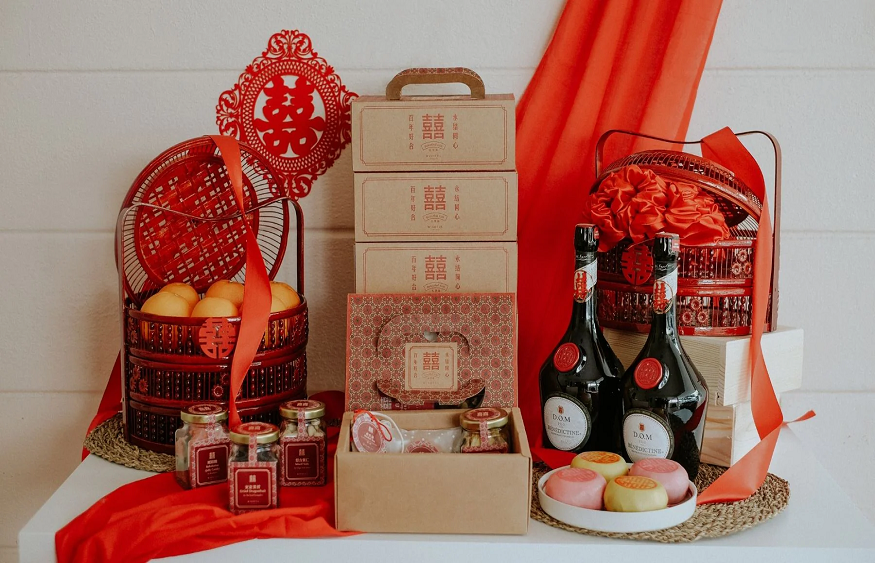
Modern couples plan their weddings with relative ease due to abundant available resources. However, things become more complicated when it comes to the traditional aspects of a wedding.
Traditional Chinese wedding ceremonies, such as the Guo Da Li ceremony, are intended to benefit the couple and their marriage. As these traditions were primarily transmitted orally from generation to generation, their purpose and how to prepare for them may be unclear. To help brides and grooms better understand the Guo Da Li ceremony and prepare for it, we’ve compiled a guide detailing everything you need to know about this ancient Chinese wedding custom.
What is the Meaning of Guo Da Li?
Guo Da Li, or the Chinese betrothal ceremony, signifies the significant formal encounter between both families and represents the groom’s commitment to marrying the fiancée and his promise to provide for her after marriage. As part of the traditional Chinese wedding rituals known as the ‘Three Letters, Six Etiquette’, selecting a favourable wedding date is required.
When is Guo Da Li performed?
It typically occurs between two and four weeks before the wedding. During the betrothal ceremony, the betrothed and a matchmaker or an elderly female relative with good fortune will give the bride’s family a variety of gifts that symbolise fecundity and prosperity.
What is Necessary For Guo Da Li?
Your preparations for your Guo Da Li ceremony depend on your dialect group. A few elements of a Hokkien bride’s Guo Da Li ceremony will differ from those of a Cantonese bride’s. As a symbol of good fortune, the objects used in the ceremony should always appear in pairs, regardless of the dialect group.
A typical Guo Da Li set includes:
- A betrothal tray.
- Dragon and Phoenix candle pairs.
- Ping Jin, a red package containing the bride price.
- A can of pig’s feet or a platter of roasted pork.
- Alcoholic beverages or alcohol.
- Customary wedding desserts.
- Oranges (typically eight, an even and fortunate number).
- Accessories for the bride.
- Double happiness stickers.
- A crimson banner to be hung above the entrance.
Hui Li, or Gift Returning
To demonstrate their approval of the marriage and appreciation for the groom’s family’s generosity, the bride’s family will return a percentage of the gifts and share the couple’s good fortune. This is also known as Hui Li, or the exchange of presents.
During the Hui Li, the bride’s dowry will also be presented to the groom’s family as a symbol of the bride’s family’s wealth and prosperity and to honour the couple’s marriage with happiness and prosperity. The dowry comprises the following:
- A tea arrangement for the groom’s home wedding tea ceremony.
- A descendant pail set consisting of an infant bathtub, toilet, receptacle, tray, and teacup.
- New linens and comforter for the bridal bed.
- A set of bedside lanterns.
- A dining ensemble that includes chopsticks, utensils, bowls, and plates.
- Two pairs of red wooden sandals, bedroom or wedding footwear.
- A sewing container containing an odd number of colourful thread skeins, needles, a pincushion, and scissors.
- A suite of gold jewellery presented to the newlywed by her parents.

